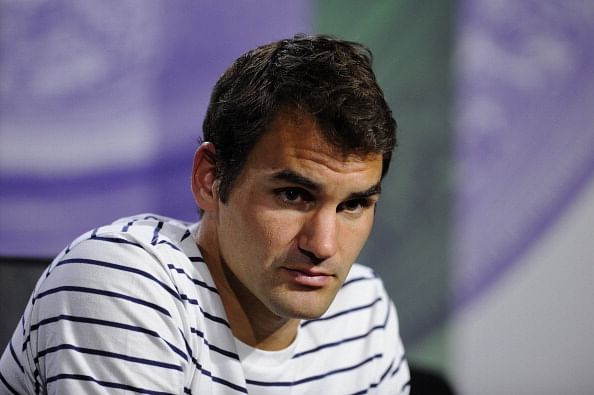
Getting used to Wimbledon without Roger Federer

Roger Federer at his post-match press conference. The Swiss maestro lost his second round clash at Wimbledon to Ukrainian Sergiy Stakovsky in four sets. (Getty Images)
The number on everyone’s lips at the end of Roger Federer‘s shock loss to Sergiy Stakhovsky in the second round of the Wimbledon Championships on Wednesday wasn’t seven (the number of times Federer has won Wimbledon), 17 (Federer’s Slam tally) or even 116 (Stakhovsky’s current ATP ranking).
It was 36 – the number of consecutive Majors at which Federer had reached the quarterfinals. Was it a cruel twist of fate that the streak had to end at the place where the Swiss had crafted his most everlasting legacy, and that too on the 10th anniversary of his first triumph there?
Maybe, but you’d be hard-pressed to complain about the fate of a man who had reached 36 freaking Slam quarterfinals in the first place. The number, like most things about Federer, is plain old surreal.
Not so surreal, though, was Federer’s play on Centre Court yesterday. It’s never a good thing to launch into a critique of the fancied player rather than celebrate the achievement of the unheralded one after an upset, but when it comes to Federer and Wimbledon, there simply is no way to avoid that.
SW19 is the place that Federer was born to rule, to turn into his own personal art gallery. No matter what happened at Paris or Rome or Melbourne, Federer always had Wimbledon. The home away from home, the last bastion, the seat of the empire – call it whatever you like, but there’s no going around that Wimbledon was Federer’s turf.
Holes had been blown in the edifice before, but never had it been razed to the ground. Never, until yesterday.
The forehand was off, there’s no doubt about that. At 5-5 in the second set tiebreaker, Federer missed a sitter putaway forehand after a big serve, handing the crucial mini-break to Stakhovsky. On two different break points at the start of the third set, Federer took control of the rally only to send a regulation forehand long on both occasions.
In the fourth set, he made a flurry of forehand errors to get broken for only the second time in the match. And just when you thought he was about to right the ship when he struck a searing forehand pass to save the first of two match points, he followed it up with a regulation error off his…backhand. There was just no escape route for Federer yesterday.
Of course, it’s easy to forget that the man on the other side of the net had as much of a part to play in the seismic upset as Federer’s subpar performance. So the question is: how did Stakhovsky do it?
He did it by hitting big. He did it by relentlessly attacking Federer’s backhand. He did it by employing that oldest of old-fashioned strategies, the classic serve-and-volley. But most importantly, he did it by believing in himself.